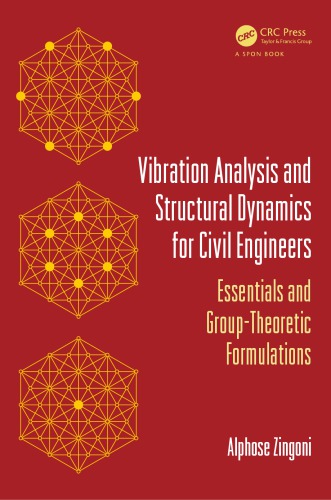

Most ebook files are in PDF format, so you can easily read them using various software such as Foxit Reader or directly on the Google Chrome browser.
Some ebook files are released by publishers in other formats such as .awz, .mobi, .epub, .fb2, etc. You may need to install specific software to read these formats on mobile/PC, such as Calibre.
Please read the tutorial at this link: https://ebookbell.com/faq
We offer FREE conversion to the popular formats you request; however, this may take some time. Therefore, right after payment, please email us, and we will try to provide the service as quickly as possible.
For some exceptional file formats or broken links (if any), please refrain from opening any disputes. Instead, email us first, and we will try to assist within a maximum of 6 hours.
EbookBell Team

5.0
70 reviewsAppeals to the Student and the Seasoned Professional
While the analysis of a civil-engineering structure typically seeks to quantify static effects (stresses and strains), there are some aspects that require considerations of vibration and dynamic behavior. Vibration Analysis and Structural Dynamics for Civil Engineers: Essentials and Group-Theoretic Formulations is relevant to instances that involve significant time-varying effects, including impact and sudden movement. It explains the basic theory to undergraduate and graduate students taking courses on vibration and dynamics, and also presents an original approach for the vibration analysis of symmetric systems, for both researchers and practicing engineers. Divided into two parts, it first covers the fundamentals of the vibration of engineering systems, and later addresses how symmetry affects vibration behavior.
Part I treats the modeling of discrete single and multi-degree-of-freedom systems, as well as mathematical formulations for continuous systems, both analytical and numerical. It also features some worked examples and tutorial problems. Part II introduces the mathematical concepts of group theory and symmetry groups, and applies these to the vibration of a diverse range of problems in structural mechanics. It reveals the computational benefits of the group-theoretic approach, and sheds new insights on complex vibration phenomena.
The book consists of 11 chapters with topics that include:
Vibration Analysis and Structural Dynamics for Civil Engineers: Essentials and Group-Theoretic Formulations acquaints students with the fundamentals of vibration theory, informs experienced structural practitioners on simple and effective techniques for vibration modelling, and provides researchers with new directions for the development of computational vibration procedures.